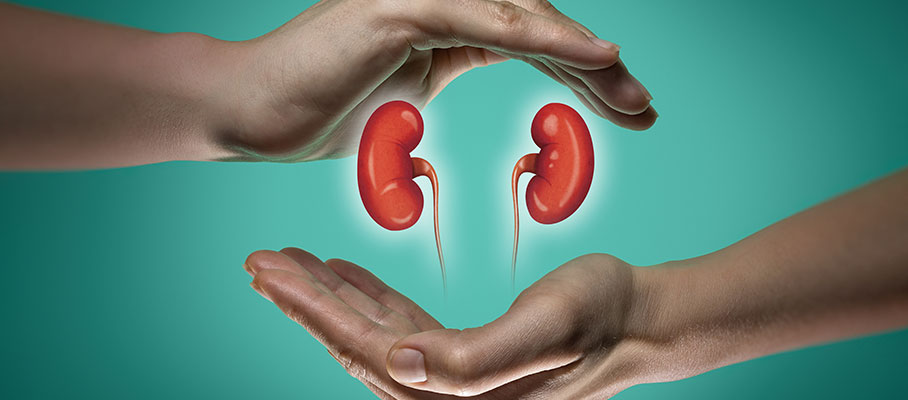2) This program is supported by an educational grant from Bayer & is intended for #healthcare providers. Author disclosures can be found at https://t.co/1IwRzUwJNE. Prior programs, still available for CE/#CME credit, are at https://t.co/jFwbLEdoIq. CE/#CME credit 🇬🇧🇪🇺🇨🇦🇺🇸
— @CKD_ce (@ckd_ce) September 20, 2022
4) Diabetes is a well known independent risk factor for #cardiovascular and #renal disease with recent #CVOTs highlighting this link.
— @CKD_ce (@ckd_ce) September 20, 2022
6) ADA/EASD @AmDiabetesAssn / @EASDelearning and many other #Guidelines mention the importance of #riskreduction for #CVD and renal separately in DM but do not mention a ‘cardiorenal’ entity separately in management pic.twitter.com/zcUgy0vKqo
— @CKD_ce (@ckd_ce) September 20, 2022
8) Data from the 🇬🇧and the 🇺🇸show that about 20% – 40% of patients with diabetes develop #CKD. (US data below, from 🔓https://t.co/dkBBWfzjY2) pic.twitter.com/z3PdBJNCAS
— @CKD_ce (@ckd_ce) September 20, 2022
10) Cardiovascular disease (#CVD) is a leading cause of morbidity and mortality in T2DM. It has an overall prevalence of 32.2%, and is responsible for about 50% deaths globally. See 🔓https://t.co/5MbwSai7ct pic.twitter.com/23Y3VwHWi8
— @CKD_ce (@ckd_ce) September 20, 2022
12) This appears to cause intractable changes in volume regulation, sodium homeostasis, inflammation, & metabolism that lead to cardiorenal disease and mortality. 🔓https://t.co/6hiM930SLe
— @CKD_ce (@ckd_ce) September 20, 2022
14) In a cohort of people with new onset #HF, hospitalisation and mortality was higher in patients with T2D or CKD, and worst in those with both comorbidities. See 🔓https://t.co/xzcGM7dGjb @kamleshkhunti @profmjdavies @scelee1 @LDC_tweets pic.twitter.com/f5LOzmHEd0
— @CKD_ce (@ckd_ce) September 20, 2022
16) Though we focus on #T2DM, there have been data also looking at those with #T1DM…
— @CKD_ce (@ckd_ce) September 20, 2022
So… is the risk of #cardiorenal disease at younger ages higher in those with type 1 or type 2 DM?
18) Total age-adjusted #CVRD burden & risks were greater among those with #T1D compared with #T2D (🔓https://t.co/tS3qJs5Tom) pic.twitter.com/uMX8W41If4
— @CKD_ce (@ckd_ce) September 20, 2022
20) Slightly beyond the scope of this tweetorial but a few tantalizing considerations…
— @CKD_ce (@ckd_ce) September 20, 2022
Looking at the mechanisms of #GLP-1 RAs we could see how they might be beneficial in those with #cardiorenal disease … (🔓https://t.co/zAICdPVtLh) pic.twitter.com/xUcpJd86nX
22) Kalra et al (ref in tweet 21) suggest a potential mode of action for their benefit: pic.twitter.com/jjz18V0M9r
— @CKD_ce (@ckd_ce) September 20, 2022
24) Interesting thoughts and considerations, it remains to be seen if this is likely to occur clinically…what do you think? Comment below . . . and return TOMORROW for more education on #cardiorenal syndrome and #diabetes!
— @CKD_ce (@ckd_ce) September 20, 2022
26) So we left off yesterday (scroll ⤴️) talking about the potential role for #SGTL2i in the management of #CRS with #diabetes.
— @CKD_ce (@ckd_ce) September 21, 2022
Now…something that definitely is in practice…#mineralocorticoid antagonism in #DKD!
28) It’s important to know that in #DKD, overactivation of #MR has been implicated as a driver of inflammation and fibrosis.
— @CKD_ce (@ckd_ce) September 21, 2022
Local activation of #RAAS has been shown to contribute to DKD (see 🔓https://t.co/NywJfcSzPl) pic.twitter.com/8HZvNrVomD
30) And as per our friends at @goKDIGO, ACE/ARBs have long been and remain the staple medication of CKD/DKD management pic.twitter.com/GcrfezoPtq
— @CKD_ce (@ckd_ce) September 21, 2022
32) Studies of medications in addition to ACE/ARBs have also highlighted this with the well-known #ALTITUDE study looking at #aliskrein as add on to ACEi/ARB stopped early with the risk of hyperkalaemia notable (🔓https://t.co/HCoLXs51jt) pic.twitter.com/sgGAYxeYgS
— @CKD_ce (@ckd_ce) September 21, 2022
34) Since #spironolactone has the longest history of all the MRAs, MRA-in-DKD studies were performed with it. 1st report of proteinuria⬇️from spironolactone as an add-on therapy to a RAS inhibitor in patients with CKD (5 of 8 had DKD) was in 2001 (https://t.co/76bH2VDkCa): pic.twitter.com/fyQ8ag7rjN
— @CKD_ce (@ckd_ce) September 21, 2022
36) 21 patients w/T2DM on RAASi were treated w/spironolactone 25mg or placebo x 8wks ➡️ significant ⬇️ in albuminuria (& BP)….with minimal hyperkalaemia in this case…however…
— @CKD_ce (@ckd_ce) September 21, 2022
This metanalysis of spironolactone shows reductions in uACR with no significant change in eGFR… pic.twitter.com/uoay3eczln
38) What about the other well known (second-generation) steroidal MRA…#eplerenone? pic.twitter.com/jiOLOEuDds
— @CKD_ce (@ckd_ce) September 21, 2022
40) Even more so this finding that hyperkalaemia may not be as significant… pic.twitter.com/ounnVOZYpW
— @CKD_ce (@ckd_ce) September 21, 2022
42) So TOMORROW we’ll look at the whole field of #MRAs in general . . . AND provide your super secret (not really) link to your🆓CE/#CME, all delivered RIGHT HERE on Twitter and @ckd_ce! Be sure to COME BACK!@HecmagsMD @ChristosArgyrop @nephondemand @edgarvlermamd @kdpsinghlab
— @CKD_ce (@ckd_ce) September 21, 2022
44) Let’s broaden the field to look at MRAs in general… this analysis of MRAs also noted benefits seen with individual therapies: 🔓https://t.co/3u99oVMxfI
— @CKD_ce (@ckd_ce) September 22, 2022
46) Effect on #uACR excretion pic.twitter.com/n5LgH8dnUu
— @CKD_ce (@ckd_ce) September 22, 2022
48) Yet the same hyperkalaemia risk remains… ⚠️ pic.twitter.com/lPDmq7BO90
— @CKD_ce (@ckd_ce) September 22, 2022
50) Again, potential benefit in mortality reduction but notable increase in hospitalization for #hyperkalaemia!
— @CKD_ce (@ckd_ce) September 22, 2022
MRAs have a role in DKD in⬇️albuminuria. Hard outcomes such as kidney disease progression, cardiovascular events and mortality data are not so clear for earlier MRAs
52) Use in this setting would require diet review, ACE inhibitor/ARB use monitoring, possible potassium binder use, regular serum potassium and renal function monitoring….maybe highlighting where a non-steroidal MRA may have its benefits…😊
— @CKD_ce (@ckd_ce) September 22, 2022
53b) It's c . . . hyperkalaemia always rears its ugly head with #MRA therapy. Don't miss more CE/#CME on this issue at https://t.co/D9jsOpYu4i and https://t.co/5bNr9FOqPj
— @CKD_ce (@ckd_ce) September 22, 2022
54) And there you have it! Congratulations on completing your epic journey through #cardiorenal disease to MRAs in #DKD! Go forth and claim your credit at https://t.co/mZIRq5FROB! This is your friendly twitterhood GoggleDoc signing off! FOLLOW US for more education!
— @CKD_ce (@ckd_ce) September 22, 2022
